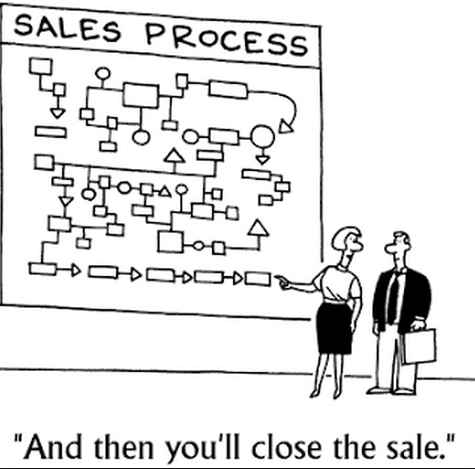
by Lisa Terrenzi, CEO
It, of course, takes certainty to bring a prospect through to a close—and that certainty is rooted in the discipline of the sales process.
Certainty of the sales process is quite important. In fact, there has never been an instance in which I analyzed a lost sale, that I didn’t discover that the salesperson had skipped one or more steps of the sales process.
Here’s a recent example (and I’ll leave out names to protect the innocent!). We were asked to work with a gentleman who was presented to us as a top-of-the-line salesperson. At his previous company, this guy had outsold hundreds of other salespeople within weeks of arriving there. Not only would he outsell them, but he also did so in half the time per week of other reps. He was charismatic and lovable—the guy you really wanted to talk to.
A great opportunity came along, and he jumped into a new product and company. These were big deals. But this salesperson had done probably 45 presentations in just a couple of weeks and hadn’t been able to close one deal. When we conducted an analysis, listened to his sales calls, and looked through all his notes, we found 2 things:
1. He did all the talking—the prospect couldn’t get a word in edgewise.
2. He only did 2 steps of the sales process. He did the Contact step and then went right onto the Educate step. Following that, he dove into the close. He’d skipped a good part of Contact and Interview, totally skipped the Qualify step and the Agreement step. It’s no wonder he was making no sales!
Another example is a salesperson who worked at a place where the salespeople basically just answer the phone. They aren’t just order-takers, though—we came up with a tailor-made sales process for their business. This sales rep had a very low closing rate and was totally blaming our sales process. When we did some listening in, we made an interesting discovery: this rep was doing none of the sales process steps, but simply answering the phone and taking the attitude, “Well, are you going to order or not?” and moving on if they didn’t.
These are all-too-obvious examples—but there can be far more subtle ones. An all-too-common example deals with one of the most important steps, Contact, and Interview, which involves getting the prospect talking to you, discovering why they’re interested in your product or service in the first place, and what problems they’re looking to solve.
The Contact and Interview step are often skimped on, and the salesperson may not even be totally aware of it. They’ll try to follow the sales process step-by-step—but they assume (and we all know the result of “assume”) that they already know why the prospect needs the product or service, and what their issues are. They then arrive at the close and wonder why it never happens.
If you want certainty in sales—and who doesn’t? —make sure to follow your sales process exactly.
To learn more, sign up at SELLability.com.
+1.702.943.0234 (office)
Info@sellability.com

Recent Comments